This post may contain affiliate links, which means that I may earn a commission if you click on the link, with no cost for you. It’s one of the ways I support my blog. You can read more about this here.
Introduction
Do you ever find that no matter how much you eat, you still seem to be hungry? It could be what you’re eating and not how much. When we start a diet we tend to think of all the foods we have to cut out, and not what we should be adding in. When cutting down on calories to lose weight, you should incorporate as many satiating foods as you can. In this post I want to cover 5 different food groups that are all high on the satiety scale and explain why you don’t have to eat less to lose weight!
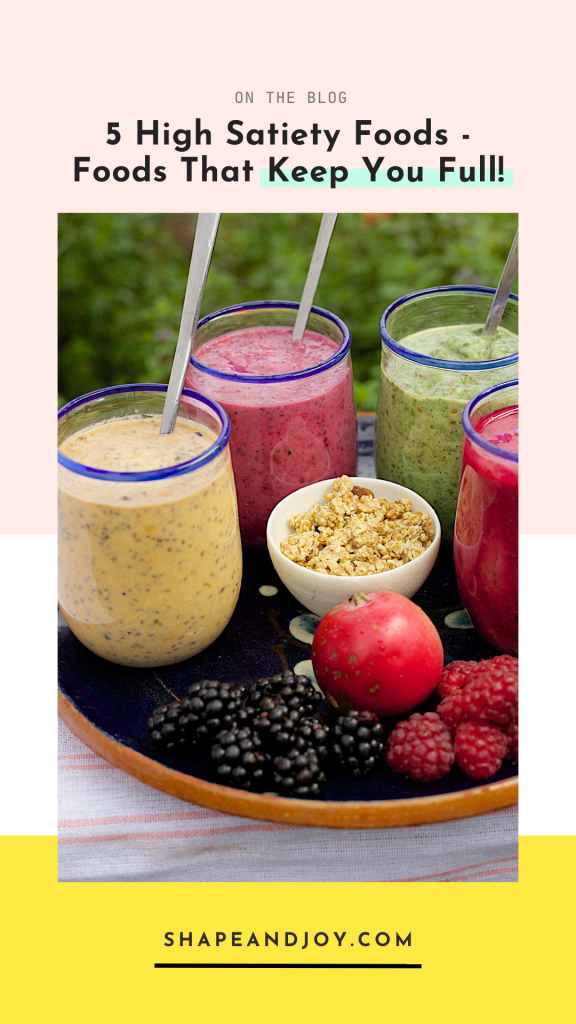
1. High-Volume Foods
High-volume, low calorie foods are foods that have fewer calories per gram. For example 100g of Broccoli has 34 calories (high volume), whereas 100g of Almonds has 579 calories (low volume). These are called low-energy-dense foods.
High volume foods are high in fibre, high in water or are considered ‘Air foods’. (Are still low in calories, will give you a full feeling, but offer little sustenance – think popcorn & rice cakes). Water has zero calories per gram, and fibre is not absorbed by your body and offers very few calories.
Low volume foods are high in fat and sugar. Fat has almost double the calories of carbs and protein per gram. (This doesn’t mean you should avoid these foods, just that you should focus on adding more high volume foods to your meals).
The great thing about volume eating is that it’s not about what to take away from your diet, but instead is what you can add to it.
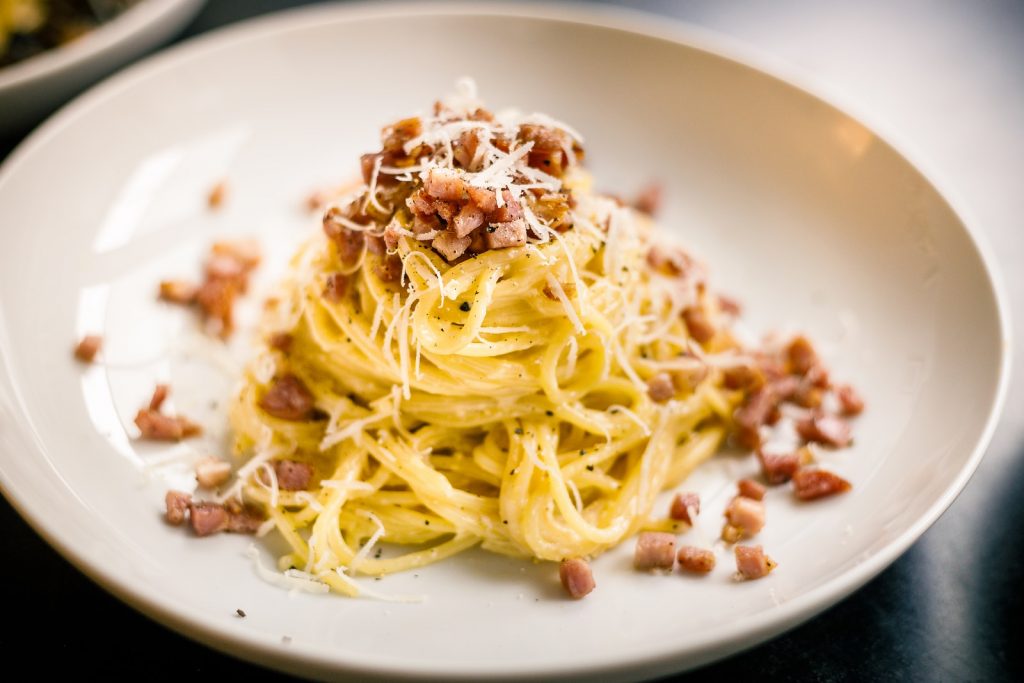
A Meal Hack
For example, one of my favourite meals is Spaghetti Bolognese, and I love pasta in general. My average Spaghetti Bolognese would contain around 700 calories, and was generally pretty filling but to step it up a notch I started adding courgetti. (I can’t recommend a spiralizer enough! I use this one! It’s nice and compact, as I don’t like to take up too much room with kitchen gadgets) along with the spaghetti (not replacing it!), I found that I was struggling to finish the meal, and felt a lot fuller for longer afterwards. So to avoid waste, I started cooking less spaghetti and mince, keeping the same amount of courgetti in there, reducing the meal to around 500 calories. I still get to enjoy my favourite meal but for fewer calories, and I feel fuller for longer – win win!
Examples:
(Please note: This is not an example of “good” vs “bad” food – everything in moderation!)
High Volume/Low Calorie Foods:
- Leafy green vegetables
- Berries
- Air Foods like popcorn
- Wholegrain oats
Low Volume/High Calorie Foods
- Fatty cuts of meat
- Oil
- Sugar
- Sweets
2. High Protein Foods
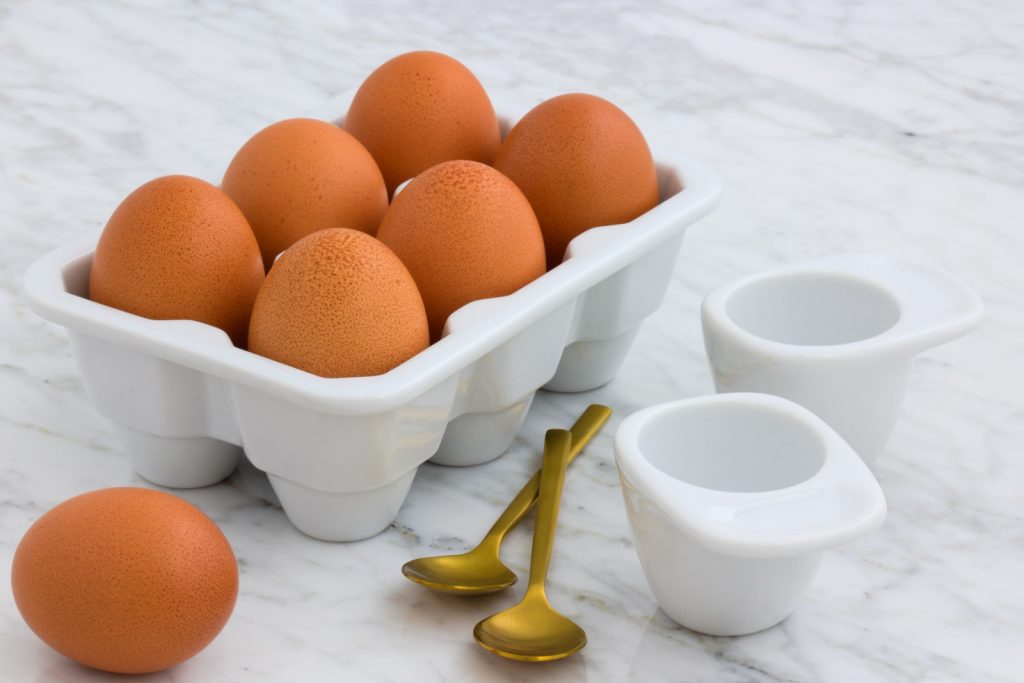
High protein foods have a really high satiety score. By increasing your protein intake you can reduce hunger hormones, like ghrelin. Protein increases the time of ghrelin suppression and is one of the most satiating macronutrients and it also boosts satiety hormones, like leptin.
Reducing levels of ghrelin (hunger), and increasing levels of leptin (satiety) will leave you feeling fuller.
Try to include foods high in protein with all of your meals, so that you are consuming protein all throughout the day, rather than just in one sitting. You should consume between 1.6 and 2.2g of protein per kg of body weight (or 0.73 and 1g per lb) to aid in weight loss.
Protein is so important when it comes to weight loss for a number of other reasons outside of it being one of the most satiating foods. Including muscle maintenance and growth. Amino acids, the building blocks of proteins, are essential for these processes. I go into detail about macronutrients and Leptin and Ghrelin in my FREE eBook, and my Complete Weight Loss Guide.
3. High Fibre Foods
Fibre is a type of carbohydrate that your body can’t digest. Most carbohydrates are broken down into sugar molecules, but fibre isn’t, so instead it passes through the body undigested. Fibre also slows down the time it takes for food to be digested and for your stomach to empty. Meaning it extends the time you feel full.
Fibre also slows the rate that sugar is absorbed into the bloodstream. When you eat foods high in fibre, the sugar in those foods is absorbed slower. This stops blood-glucose levels from rising too fast. A rapid increase in blood-glucose levels will lead to a dip which will lead to feeling hungry sooner, or craving more sugar.
As mentioned with Volume Eating, high fibre foods provide volume to meals and because they often take longer to chew, allows you to be more mindful about what you’re eating and how full you are. See this post for more tips on eating mindfully.
Foods High In Fibre:
- Beans and lentils
- Apples
- Whole grains
- Berries
- Avocado
- Bananas
- Carrots
- Broccoli
- Chickpeas
- Pears
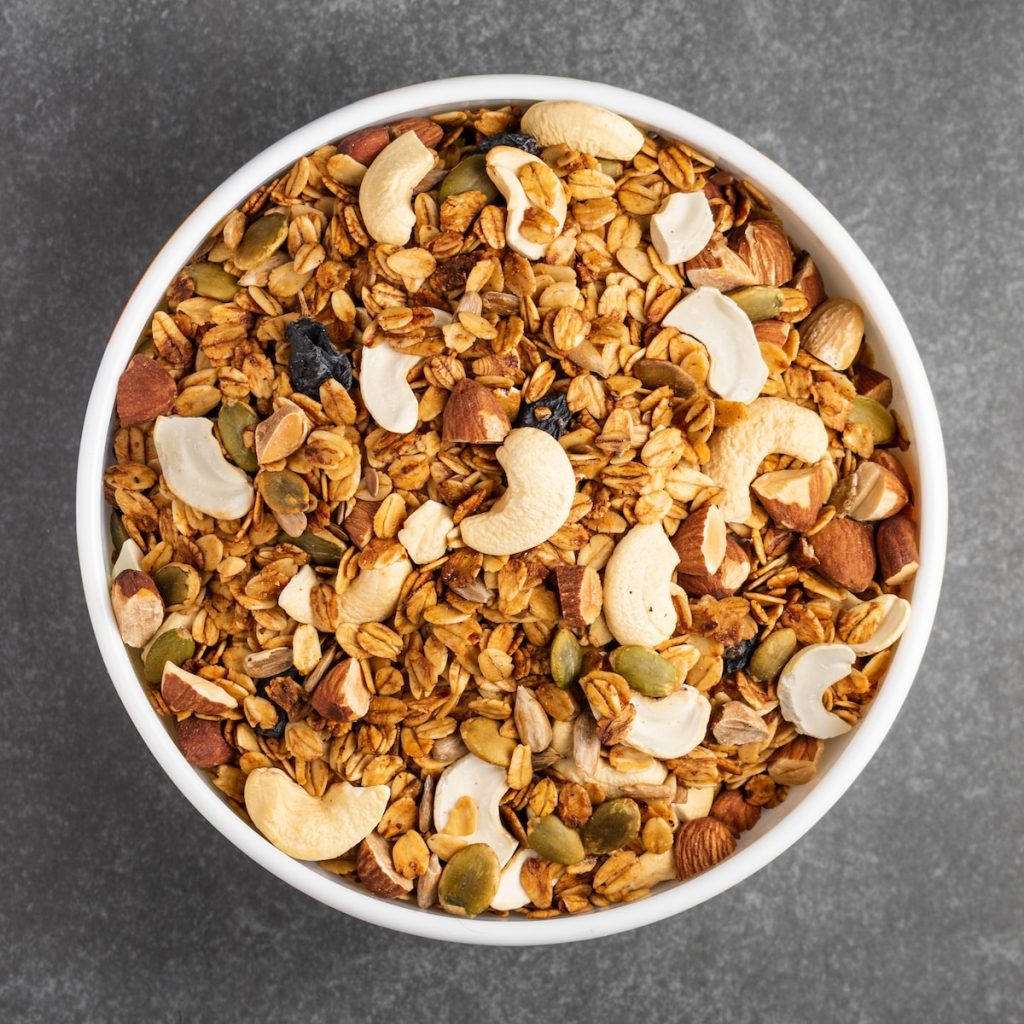
4. Low-GI Foods
GI stands for glycaemic index and the glycaemic index is a number from 0 to 100 assigned to a food (only foods containing carbs). With pure glucose (sugar) given the value of 100, which represents the rise in blood glucose levels two hours after consuming that food.
The three ratings are:
- Low: 55 or fewer
- Medium: 56–69
- High: 70 or more
Low-GI foods take longer to digest and have less effect on blood sugar levels which can leave you feeling fuller for longer. This could help control your appetite and therefore can lead to reduced calorie intake.
Examples:
High GI Foods
- White rice
- White bread
- Potatoes
Low GI Foods
- Green vegetables
- Beans & Lentils
- Sourdough Bread
5. Healthy Fats
There are 4 types of dietary fats. These are:
- Saturated fats
- Trans fats
- Monounsaturated fats
- Polyunsaturated fats
Saturated & trans fats fall into the “unhealthy” category and mono & poly unsaturated fats fall into the “healthy” category.
Note: I use the terms “healthy” & “unhealthy” loosely, as what defines a food is as healthy can often be relative to individual needs.
Unfortunately, fat has gotten a pretty bad rep over the years because of it’s higher calorie density. Many diet products are labelled as low-fat or 0% fat, and are marketed as being better for us. Meaning that even unsaturated fats are also often avoided when people are on low fat diets. But we all need to eat a small amount of fat to have a healthy and balanced diet. Fat contributes to our energy levels, satiety, skin health, and so much more.
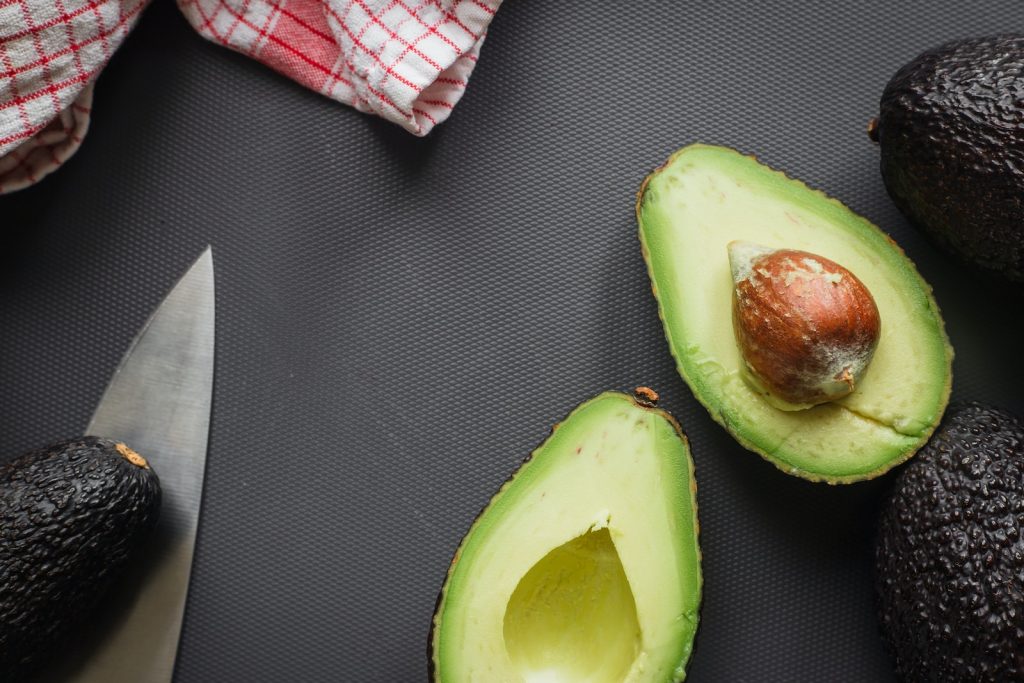
Why Fats Should Be On Your List Of Satiating Foods
- Having a small amount of fat in a meal can slow down the rate that your stomach empties during digestion. So having the food remain in your stomach longer, will leave you feeling fuller longer.
- Release of appetite hormones including a reduction of hunger hormones and an increase in satiety hormones.
- Reduce intake of “low-fat” alternatives: Low-fat alternatives are packed with sugar and other highly processed carbs, which may promote hunger. Eating refined carbs can lead to spikes in blood sugar and a release of insulin. When insulin is released, it removes sugar from your blood and low blood sugar levels will signal to your body that you need more food. Leading to feelings of hunger, and craving more highly refined carbs and sugar.
Satiating Foods: Conclusion
Adding to meals can be a daunting task but it’s worth it for the positive benefits it brings. Good nutrition is the foundation for successful weight loss and maintenance so it’s important to make sure you’re getting the right nutrients in your diet.
Increasing the amount of satiating foods like quality proteins, complex carbohydrates and healthy fats in each meal will help keep you full and satisfied longer and these foods will provide you with the energy and nutrition your body needs to stay healthy.
Understanding how foods keep you satiated is crucial when it comes to being able to eat more intuitively and incorporating healthy habits into your lifestyle to maintain a healthy weight. But it’s important to try and incorporate changes slowly. Don’t try to make too many changes at once as it often leads to disappointment and frustration.
Have you got a favourite food hack that helps keep you full? Leave a comment below!

